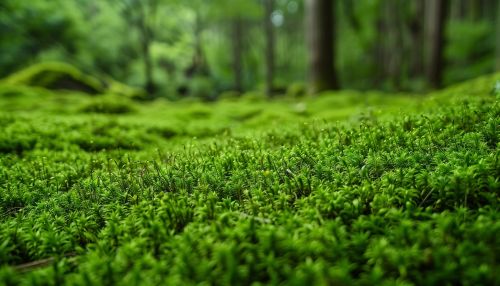Bryophyta
Introduction
Bryophyta, commonly known as mosses, are a group of non-vascular plants that belong to the kingdom Plantae. They are characterized by their ability to thrive in a variety of environments, from arctic tundra to desert landscapes. Mosses are often found in moist, shaded areas and play a crucial role in maintaining ecosystem balance.


Classification and Evolution
Bryophyta is traditionally divided into three classes: Bryopsida, Sphagnopsida, and Andreaeopsida. These classes are distinguished by their reproductive structures, growth patterns, and cellular structures. The evolutionary history of Bryophyta is complex and still a subject of ongoing research. It is believed that they evolved from algal ancestors during the Ordovician period, approximately 450 million years ago.
Morphology
Mosses exhibit a simple structure compared to higher plants. The plant body, known as a Thallus, is not differentiated into roots, stems, and leaves. Instead, they have rhizoids, a stem-like structure called an axis, and leaf-like structures. The cells of Bryophyta are eukaryotic, containing a nucleus and other organelles. The cell wall is composed of cellulose and pectin.
Reproduction
Bryophytes reproduce both sexually and asexually. Sexual reproduction involves the production of specialized cells called sporophytes and gametophytes. The sporophytes produce spores, which are dispersed by wind or water and germinate to form new plants. Asexual reproduction occurs through fragmentation, where a piece of the plant breaks off and grows into a new plant.
Ecology and Distribution
Mosses are found worldwide, from the arctic to the tropics, and from sea level to high mountain elevations. They are most abundant in cool, damp environments, but some species can survive in deserts and other extreme habitats. Mosses play a vital role in ecosystems, contributing to soil formation, water retention, and providing habitat for numerous small animals and microorganisms.
Economic Importance
Despite their small size, mosses have significant economic importance. They are used in horticulture for decoration and as soil conditioners. Some species are used in the production of pharmaceuticals and are a source of bioactive compounds. Additionally, mosses are used in environmental monitoring as they can accumulate heavy metals and other pollutants, providing valuable information about environmental health.
Conservation
Many moss species are threatened by habitat loss, pollution, and climate change. Conservation efforts are focused on protecting their habitats and regulating the collection and trade of mosses. Some species are listed under the IUCN Red List of threatened species.
